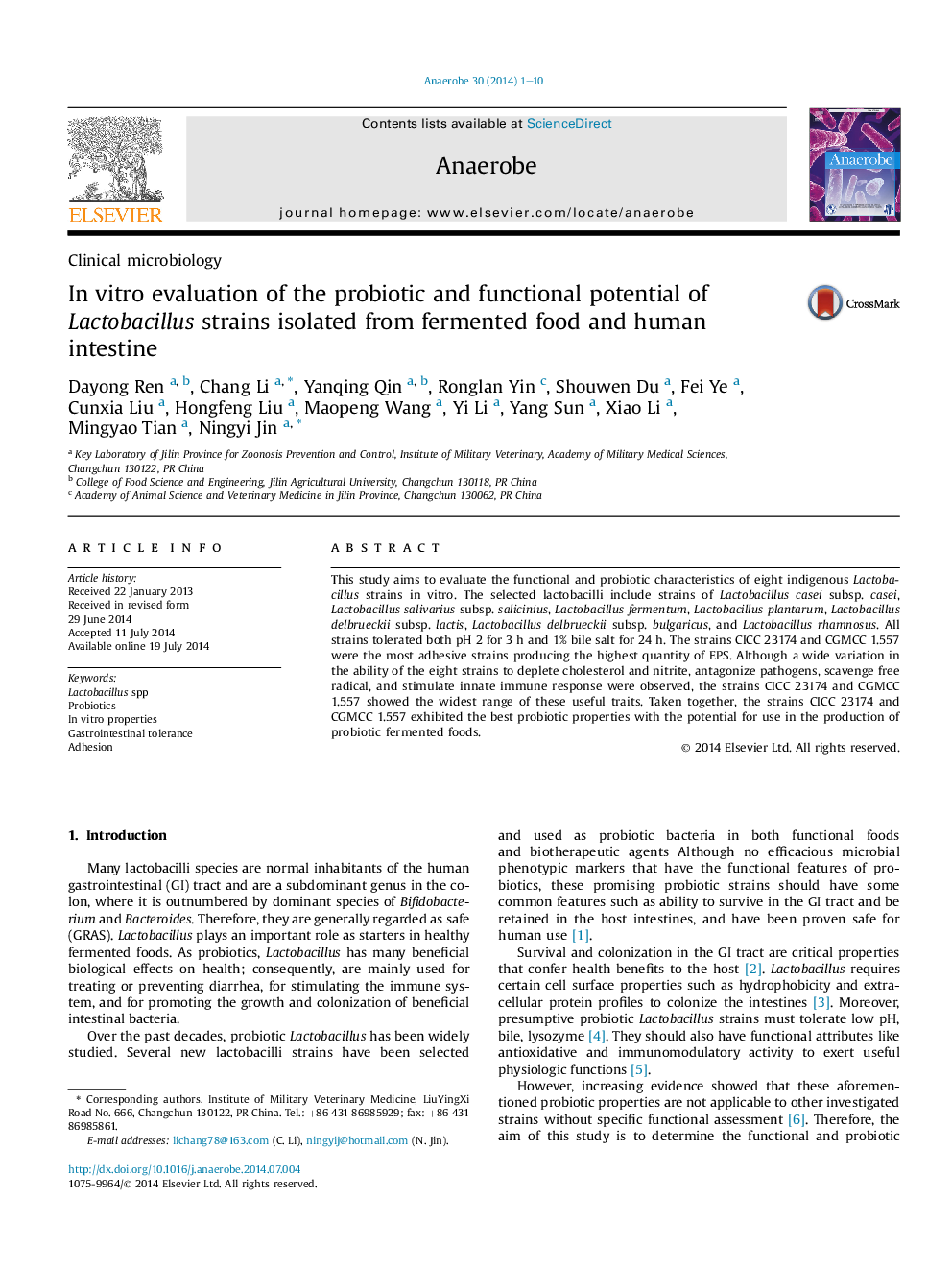| Article ID | Journal | Published Year | Pages | File Type |
|---|---|---|---|---|
| 3395017 | Anaerobe | 2014 | 10 Pages |
•The probiotic features of eight indigenous Lactobacillus strains were studied.•Lactobacillus salivarius subsp. salicinius and Lactobacillus plantarum exhibited probiotic properties.•L. salivarius subsp. salicinius and L. plantarum were presumable probiotics.
This study aims to evaluate the functional and probiotic characteristics of eight indigenous Lactobacillus strains in vitro. The selected lactobacilli include strains of Lactobacillus casei subsp. casei, Lactobacillus salivarius subsp. salicinius, Lactobacillus fermentum, Lactobacillus plantarum, Lactobacillus delbrueckii subsp. lactis, Lactobacillus delbrueckii subsp. bulgaricus, and Lactobacillus rhamnosus. All strains tolerated both pH 2 for 3 h and 1% bile salt for 24 h. The strains CICC 23174 and CGMCC 1.557 were the most adhesive strains producing the highest quantity of EPS. Although a wide variation in the ability of the eight strains to deplete cholesterol and nitrite, antagonize pathogens, scavenge free radical, and stimulate innate immune response were observed, the strains CICC 23174 and CGMCC 1.557 showed the widest range of these useful traits. Taken together, the strains CICC 23174 and CGMCC 1.557 exhibited the best probiotic properties with the potential for use in the production of probiotic fermented foods.
